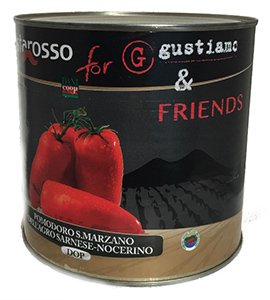Specialty-Food Sales Top $100 Billion for First Time
29 April 2015
 The 10 best-selling categories have shifted since just 2013, and today, cheese is still tops, but refrigerated pasta, functional beverages and nut and seed butters show big gains. Why should we care? Because foodservice is an increasingly important sector to that industry, with growth of nearly 31% since 2012.
The 10 best-selling categories have shifted since just 2013, and today, cheese is still tops, but refrigerated pasta, functional beverages and nut and seed butters show big gains. Why should we care? Because foodservice is an increasingly important sector to that industry, with growth of nearly 31% since 2012.
The specialty-food industry is a bright spot in the U.S. economy. In 2014, sales of specialty food topped $100 billion for the first time, with retail and foodservice sales reaching a record $109 billion.
Retail sales of specialty-food sales grew 19% from 2012 to 2014 versus a tepid 2% increase for all food. The industry, fueled by small businesses, now boasts 15 segments that exceed $1 billion in sales, including cheese; coffee; meat, poultry and seafood; chips, pretzels and snacks; candy; and yogurt.
These findings are from a new report from the Specialty Food Association produced in conjunction with research firms Mintel International and SPINS/IRI. The report, “The State of the Specialty Food Industry 2015,” tracks U.S. sales of specialty food through supermarkets, natural-food stores, specialty-food retailers and foodservice venues. Specialty foods are broadly defined for the report as products that have limited distribution and a reputation for high quality.
“The time is now for specialty food,” says Ron Tanner, vice president of philanthropy, government and industry relations for the Specialty Food Association (formerly the National Association for the Specialty Food Trade, Inc., or NASFT). “Consumers are looking for new tastes, foods with fewer and cleaner ingredients, health attributes and products that are made by companies with values they care about. All of these define specialty food.”
The top 10 best-selling categories have shifted since 2013. Cheese is still tops with $3.7 billion in sales, but coffee and cocoa have jumped over frozen and refrigerated meat, poultry and seafood to claim second place. Bread and baked goods entered the top five, bumping out yogurt. Nuts, seeds, dried fruits and vegetables made it into the top 10, with $1.3 billion in sales in 2014.
The fastest-growing categories in unit sales are refrigerated pasta and pizza sauces, up 78% since 2012, followed by refrigerated pasta and eggs, both up 53%. Other notable gainers in unit sales are functional beverages, nut and seed butters and energy bars and gels. Overall, unit sales of specialty food grew 13.6%.
Retail sales of specialty food hit a record $85.5 billion in 2014, representing 78% of total U.S. sales of specialty food. Foodservice sales account for the other 22% of all specialty-food dollars, reaching $24 billion in 2014. Foodservice is an increasingly important sector, with an impressive growth of 30.7% since 2012.
Retailers interviewed for the report said “local” is the most important product claim today, and predict it will remain so in three years. Some 66% of those surveyed sell products with non-GMO claims.
An eight-page overview of the report is featured in the spring 2015 issue of Specialty Food Magazine. Those highlights, plus a larger summary report with charts and data, can be found at www.specialtyfood.com/stateindustry2015.
The Specialty Food Association will host its 61st Summer Fancy Food Show in New York City, June 28-30. North America’s largest specialty-food and beverage event will showcase some 180,000 products from approximately 2,400 exhibitors from 50 countries and regions. For more info, visit www.specialtyfood.com/shows-events.
Photo: This large can of San Marzano tomatoes is a good example of a product that does double duty in the foodservice and retail realms. The 2.5-kilo/5.5-lb. can that contributes sauce to as many as 30 Napoli-style pizzas for foodservice is available to consumers who wish to make a large pot of sauce for group entertaining or to freeze. Smaller can sizes are also available to both retail and foodservice. Courtesy of Gustiamo, Inc., www.gustiamo.com.
